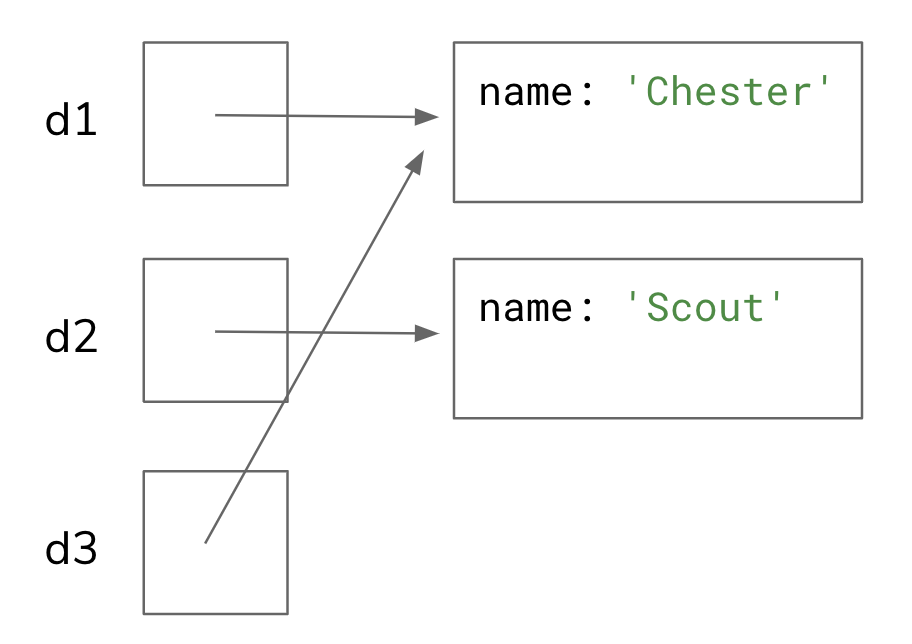Recap
Recap#
In Lesson 12, we learned about classes and objects . Here’s a quick recap of the terminology that we learned since it will be important to know these terms.
A class is a blueprint that can be used to construct instances of that blueprint. A class defines the state of the object and what behaviors it has. For example, we defined the
Dogclass as follows:class Dog: def __init__(self, name): self.name = name def bark(self): print(self.name + ': Woof')
An object (or instance ) is an instantiation of a class that has its own set of fields. You can create an instance of the
Dogclass by using the following syntax.d = Dog('Fido')
The state of the object is represented by its fields. A field is essentially a variable owned by that object that is around for that object’s lifetime. The
Dogclass has the fieldname.The behavior of an object is defined by the methods written in its class. The
Dogclass has the methodbark.Variables store references to objects rather than the objects themselves. This means the following program has 2
Dogobjects and 3Dogreferences.d1 = Dog('Chester') d2 = Dog('Scout') d3 = d1
A memory model is a picture that helps us see which objects exist in our program and which variables reference which objects.
__init__is a special method used when creating an instance of the object. It determines which parameters need to be passed when you create a new instance.Every method defined in a class needs to take a parameter
selfso the method can access the fields/methods of the instance the method is being called on.d1 = Dog('Chester') d2 = Dog('Scout') d3 = d1 d1.bark() # When running, self refers to Dog('Chester') d2.bark() # When running, self refers to Dog('Scout') d3.bark() # When running, self refers to Dog('Chester')

